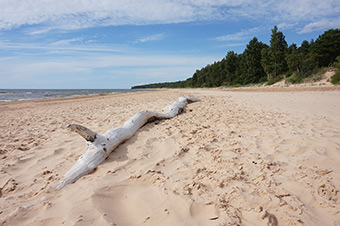Setomaa and Kihnu in Estonia, and Suiti and the Livonian Coast in Latvia are small regions where old cultural traditions are kept alive as part of the everyday life of local people. Setomaa, Kihnu and Suiti are already on the Intangible Cultural Heritage List of the United Nations Educational, Scientific and Cultural Organisation (UNESCO) and the Livonian Coast is applying for inclusion. The EU-funded UNESCO-tourism project capitalises on the uniqueness of the four regions’ living heritage and the UNESCO recognition to develop and promote them as sustainable tourism destinations.
- 27 February 2019
The project contributes to an increase in visitor numbers at cultural and natural heritage sites. The main impact so far is that tourism businesses and service providers have been actively involved in product development and marketing activities. The increased numbers of visitors will be visible after several years when the tourism products are available and the four regions have been promoted as cultural tourism destinations both in domestic and foreign markets.
UNESCO-tourism partners share knowledge and experience to create a single set of tourism products for the four regions, including tour routes and tourist packages, one of which has been created specifically for the Japanese market. The offer is built around local cultural heritage and attractive locations, and developed in cooperation with tourism companies and other service providers.
In addition, each region now has its own visual identity and style guide, which are made available for use by entities such as municipal institutions and NGOs.
Authentic experience
UNESCO-tourism was born out of an awareness that the unique characteristics of the four regions and the UNESCO recognition had not been used to their full potential, neither domestically nor abroad, in terms of tourism marketing. The project was thus aimed at supplying an attractive product that would enable visitors to experience authentic cultural heritage – a rarity in the modern world.
Traditions in the four regions encompass things like singing and dancing, regional costumes, celebration of religious and other traditional holidays, handicrafts, smoke saunas and food. Long seen as a marginal element in the tourism offer, food takes centre stage within UNESCO-tourism, which highlights it as a principal reason to visit the areas. The project showcases the different regions’ specialities and culinary traditions at pop-up café days held during gastronomic events.
Setomaa already has experience of organising pop-up café days as a way of introducing visitors to its culinary heritage and enabling tourism operators to learn more about these traditions so that they can integrate them into their offers. For the other three regions, this is a completely new concept and their launch of similar events is based on Setomaa’s experience.
Joint marketing
Another aspect of the project is the formulation of joint marketing messages and themes, with the tour routes publicised via channels including printed maps, brochures and websites. The partners have also chosen a common marketing slogan of ‘Living Cultures – United by the Unique’.
Pooling resources to identify joint messages and promoting the regions as a package helps attract more attention and increase visitor numbers, while using the UNESCO label is especially effective for foreign markets. Furthermore, the fact that the project involves areas in both Estonia and Latvia should foster cross-border tourism, as well as wider cooperation between the two countries.
Total investment and EU funding
Total investment for the project “UNESCO-tourism” is EUR 1 123 547, with the EU’s European Regional Development Fund contributing EUR 955 014 through the “Interreg V-A - Estonia-Latvia” Operational Programme for the 2014-2020 programming period.

